RESEARCH REVIEW
“Adverse Childhood Experiences (ACEs) have a tremendous impact on future violence victimization and perpetration, and lifelong health and opportunity. Working together, we can help create neighborhoods, communities, and a world in which every child can thrive.
“Learn more about preventing ACEs in your community by assuring safe, stable, nurturing relationships and environments.”
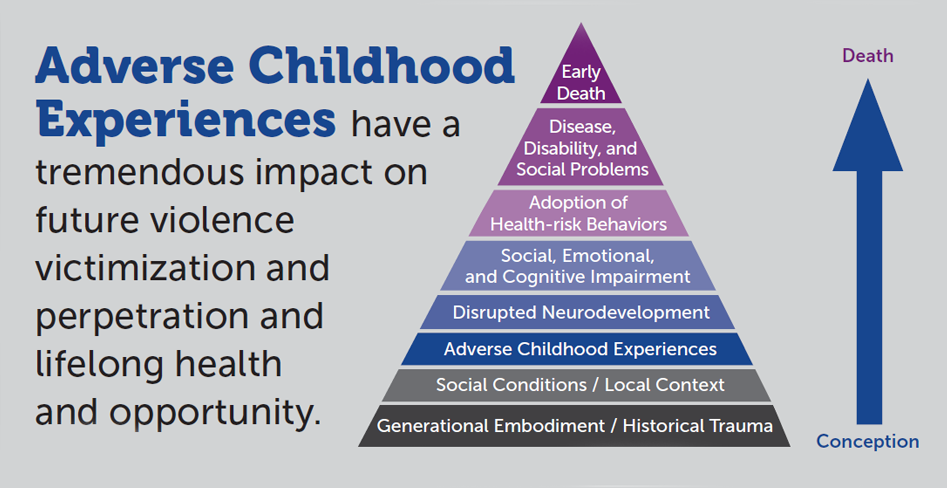
“ACEs can have lasting, negative effects on health, well-being, and opportunity. These experiences can increase the risks of injury, sexually transmitted infections, maternal and child health problems, teen pregnancy, involvement in sex trafficking, and a wide range of chronic diseases and leading causes of death such as cancer, diabetes, heart disease, and suicide.
“ACEs and associated conditions, such as living in under-resourced or racially segregated neighborhoods, frequently moving, and experiencing food insecurity, can cause toxic stress (extended or prolonged stress). Toxic stress from ACEs can change brain development and affect such things as attention, decision-making, learning, and response to stress.
“Children growing up with toxic stress may have difficulty forming healthy and stable relationships. They may also have unstable work histories as adults and struggle with finances, jobs, and depression throughout life. These effects can also be passed on to their own children. Some children may face further exposure to toxic stress from historical and ongoing traumas due to systemic racism or the impacts of poverty resulting from limited educational and economic opportunities.
ACE STUDY
“The CDC-Kaiser Permanente Adverse Childhood Experiences (ACE) Study is one of the largest investigations of childhood abuse and neglect and household challenges and later-life health and well-being.
“The original ACE Study was conducted at Kaiser Permanente from 1995 to 1997 with two waves of data collection. Over 17,000 Health Maintenance Organization members from Southern California receiving physical exams completed confidential surveys regarding their childhood experiences and current health status and behaviors.
“More detailed information about the study can be found in the links below or in the article, “Relationship of Childhood Abuse and Household Dysfunction to Many of the Leading Causes of Death in AdultsExternal,”.”
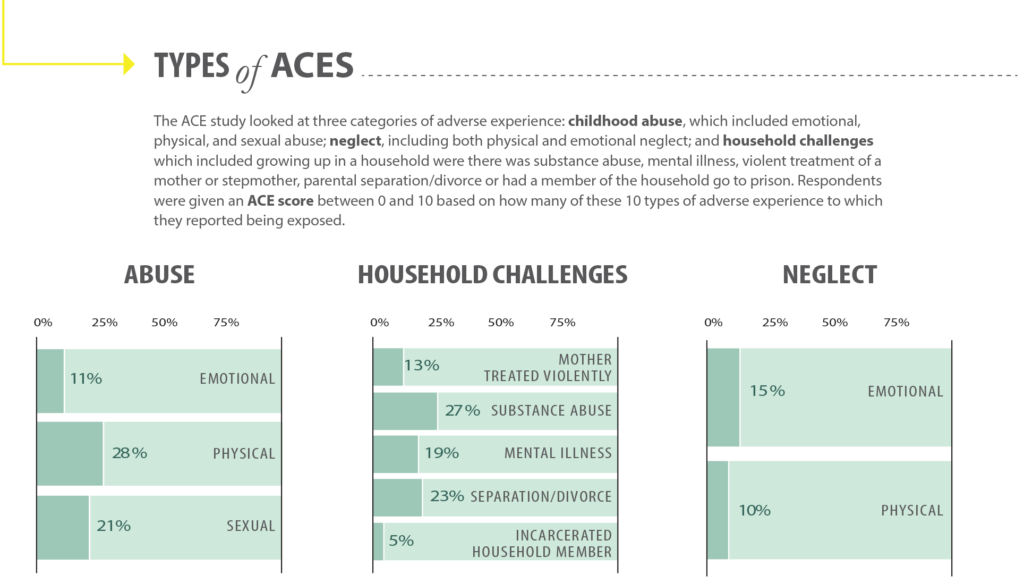
ACEs are common. About 61% of adults surveyed across 25 states reported that they had experienced at least one type of ACE, and nearly 1 in 6 reported they had experienced four or more types of ACEs.
Preventing ACEs could potentially reduce a large number of health conditions. For example, up to 1.9 million cases of heart disease and 21 million cases of depression could have been potentially avoided by preventing ACEs.
Some children are at greater risk than others. Women and several racial/ethnic minority groups were at greater risk for having experienced 4 or more types of ACEs.
ACEs are costly. The economic and social costs to families, communities, and society totals hundreds of billions of dollars each year.
ACE STUDY TESTS
“The BRFSS Adverse Childhood Experiences (ACE) module was adapted from the original CDC-Kaiser ACE Study and is used to collect information on child abuse and neglect and household challenges. The module is available in English and Spanish.
“The questionnaires are not copyrighted, and there are no fees for their use. If you include the ACE Study questionnaires in your research, a copy of the subsequent article(s) is requested (send to [email protected]).”
BRFSS ACE Module (English)pdf icon
BRFSS ACE Module (Spanish)pdf icon
“The Family Health History and Health Appraisal questionnaires were used to collect information on child abuse and neglect, household challenges, and other socio-behavioral factors in the original CDC-Kaiser ACE Study.
“The questionnaires are not copyrighted, and there are no fees for their use. If you include the ACE Study questionnaires in your research, a copy of the subsequent article(s) is requested (send to [email protected]).”
- Family Health History Questionnaire
- Health Appraisal Questionnaire
ORIGINAL ACE STUDY FINDINGS
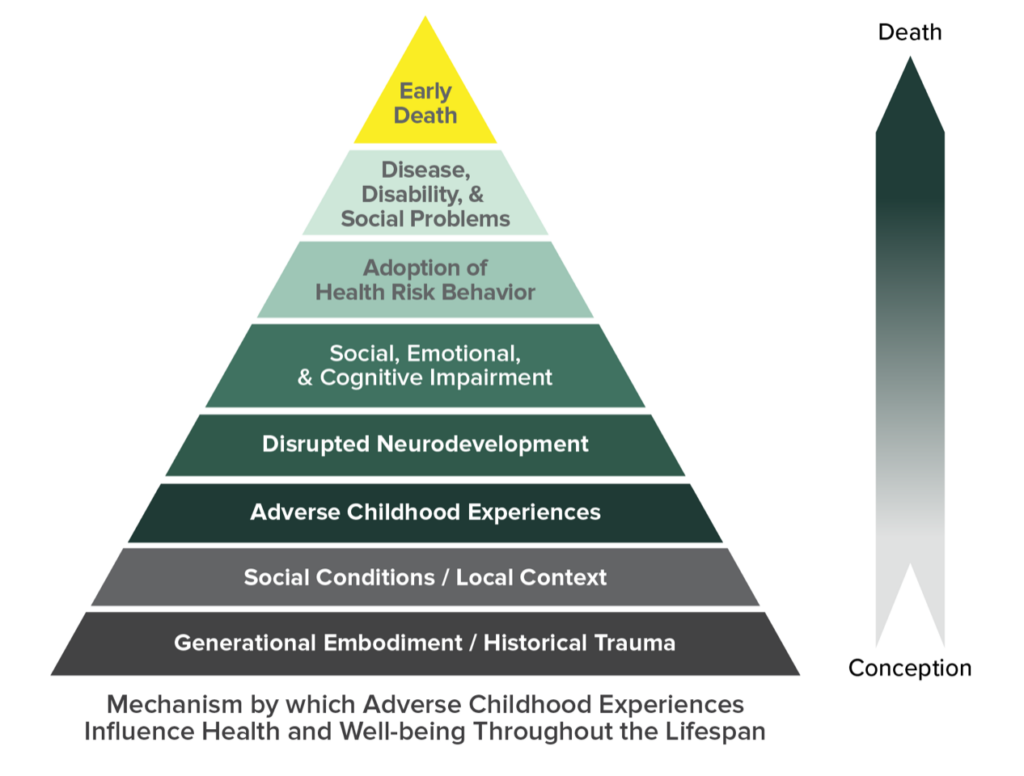
“ACEs are common across all populations. Almost two-thirds of study participants reported at least one ACE, and more than one in five reported three or more ACEs.
“Some populations are more vulnerable to experiencing ACEs because of the social and economic conditions in which they live, learn, work and play.
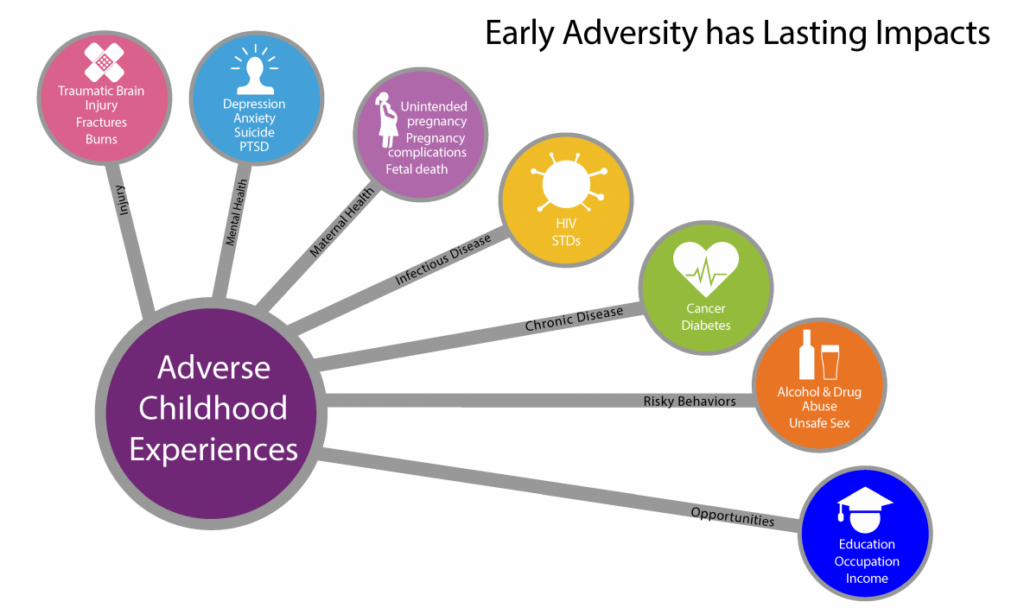
“The ACE score is the total sum of the different categories of ACEs reported by participants. Study findings show a graded dose-response relationship between ACEs and negative health and well-being outcomes. In other words, as the number of ACEs increases so does the risk for negative outcomes. For an exhaustive list of outcomes see selected journal publications.”
CURRENT RESULTS
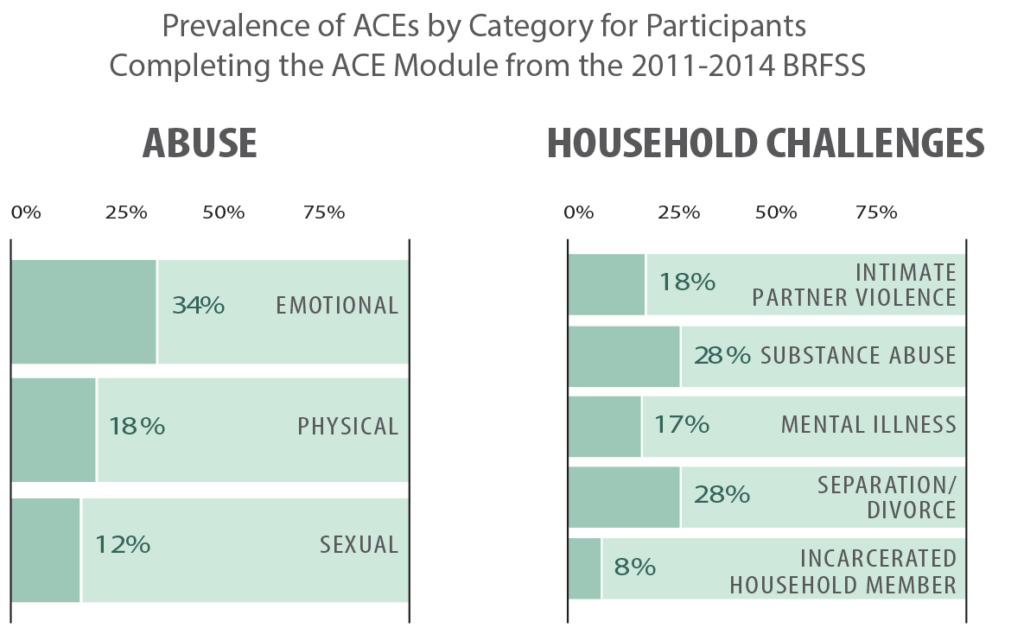
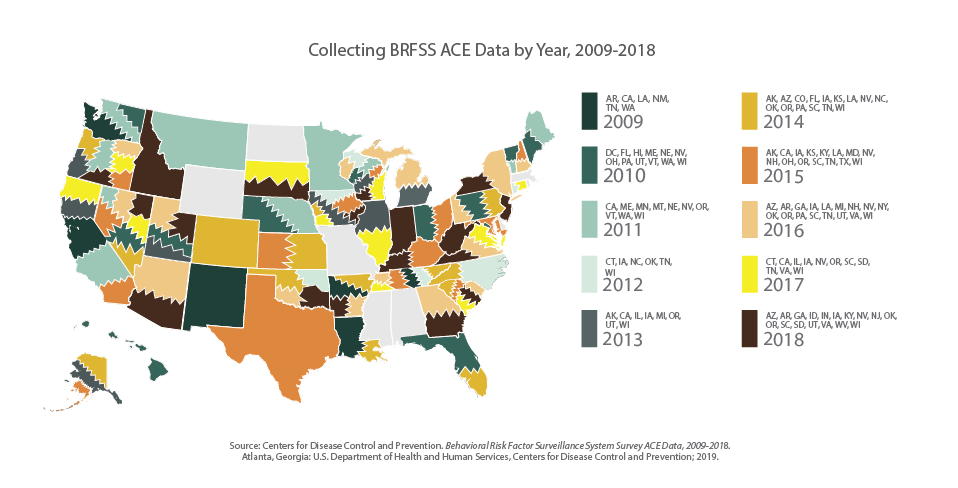
COMMUNITY SOLUTIONS
“Norms are group-level beliefs and expectations about how members of the group should behave.25,27 Changing social norms that accept or allow indifference to violence and adversity is important in the prevention of ACEs.25-29 There are a number of norms that can protect against violence and adversity, including those that:
• Promote community norms around a shared responsibility for the health and well-being of all children27
• Support parents and positive parenting, including norms around safe and effective discipline;27
• Foster healthy and positive norms around gender, masculinity, and violence to protect against violence towards intimate partners, children, and peers;25,26,28
• Reduce stigma around help-seeking;29 and
• Enhance connectedness to build resiliency in the face of adversity.29
“Public education campaigns are one way to shift social norms and reframe the way people think and talk about ACEs, and who is responsible for preventing them.27 They can help shift the narrative away from individual responsibility to one that engages the community and draws upon multiple solutions to promote safe, stable, nurturing relationships and environments for all children.27 Such a narrative can also normalize protective factors by enhancing connectedness and reducing the stigma around seeking help with parenting or for substance misuse, depression, or suicidal thoughts.27,29 Legislative approaches to reduce corporal punishment can help establish norms around safer, more effective discipline strategies to reduce the harms of harsh physical punishment, particularly if paired with public education campaigns.27 Bystander approaches and efforts to mobilize men and boys as allies in prevention can be used to change social norms in ways that support healthy relationship behaviors.25,28 Such approaches work by fostering healthy norms around gender, masculinity, and violence with the goal of spreading these social norms through peer networks.25,28 They also work by teaching young people skills to safely intervene when they see behavior that puts others at risk and reinforcing social norms that reduce their own risk for future perpetration.25,28 “
Raising awareness of ACEs can help:
- Change how people think about the causes of ACEs and who could help prevent them.
- Shift the focus from individual responsibility to community solutions.
- Reduce stigma around seeking help with parenting challenges or for substance misuse, depression, or suicidal thoughts.
- Promote safe, stable, nurturing relationships and environments where children live, learn, and play.
Let’s help all children reach their full potential and create neighborhoods, communities, and a world in which every child can thrive.

CDC Preventing ACEs
CDC Violence Prevention
CDC Prevent Child Abuse
CDC Adverse Childhood Experiences Resources
CONCLUSIONS
“ACEs are a serious public health problem with far-reaching consequences across the lifespan. They are also preventable. The strategies outlined here, drawn from the CDC Technical Packages to Prevent Violence, are intended to change norms, environments, and behaviors in ways that can prevent ACEs from happening in the first place as well as to lessen the immediate and long-term harms of ACEs. To maximize impact, these strategies and approaches are intended to be used in combination as part of a comprehensive effort to help ensure that all children have safe, stable, nurturing relationships and environments in which to thrive and achieve lifelong health and success. The hope is that multiple sectors, such as public health, health care, education, public safety, justice, social services, and business will use this information as a guide and join CDC in efforts to prevent ACEs.”
Resource CDC ACE Study Prevention Guideline